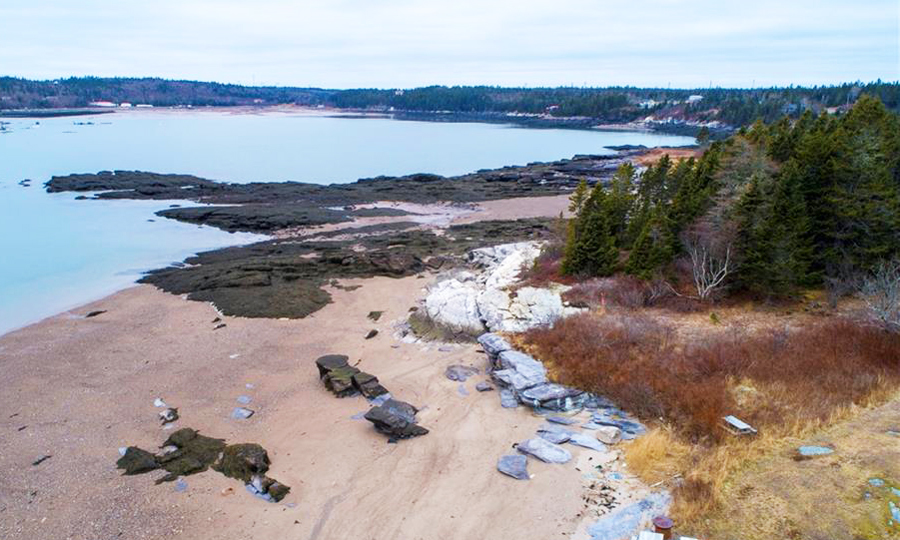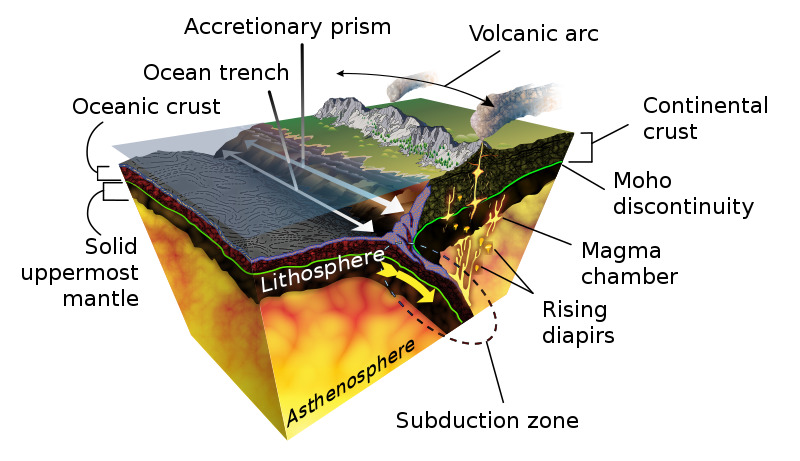To log this earthcache, please don’t stress about answering the questions. Simply send your best attempts in a private message to me, (the cache owner), and then go ahead and log it as found.
You don’t need to wait for my approval. All attempts will be accepted.
Go ahead and have fun learning! 
- [REQUIRED] Please post a photo in your log of yourself or a personal item at the outcrop to prove you visited the site.
- What kind of volcanic arc is this one?
- Do you think the crystals in this outcrop cooled slowly or quickly? Why do you think that?
- Do you see the most discernable crystals on the west or east end of the outcrop?

This earthcache has been submitted for the Planetary Geology on Earth series of EarthCaches created to give geocachers the opportunity to view and learn about geological features on Earth that also exist on Mars, or other planets with documented geology.
Volcanoes on Mars

There are many volcanoes on Mars and the planet is broken down into volcanic provinces for easier reference. Quite a few of them are very large because the planet has not had tectonic plate action for billions of years, so a single hotspot could flow unabated for millenia.
Olympus Mons is a shield volcano on Mars and it is the largest volcano in the Solar System. Located in the Tharsis region of the planet along with three other large volcanoes, Olympus Mons measures an incredible 27 km in height and is 3 times taller than Mount Everest. It is about 500 km in diameter. The mountain was formed from a single hotspot that flowed for thousands, if not millions, of years. The lack of plate tectonics that allowed this unhindered flow also prevented massive pressure buildups that would have blown the top off of the volcano, decreasing its overall height.
In the northern part of the Tharsis volcanic province is Alba Mons also known as Alba Patera. It is a unique volcanic structure for several reasons. The volcano features unnaturally low slopes formed by numerous and extensive lava flows. Its slopes are a mere 0.5 degrees. It has a double caldera feature with the central figure being 350 km wide and 1.5 km high.
In the Elysium volcanic province there are three main volcanoes. The province covers an area that is about 2,000 km in diameter. The main volcanoes are Elysium Mons, Hecates Tholus, and Albor Tholus.
Dipper Harbour - Volcanic Arc
Volcanic activity is a fascinating, frightening, and an absolutely essential feature of our planet. The volcanos here allowed hot lava, volcanic ash, and gases to escape from magma chambers below the surface.
The volcanic eruptions provided routes for material deep beneath Earth's surface to escape to the surface. They also allowed the world to vent its heat. Once there was enough molten rock — called magma — and enough pressure on it, volcanic eruptions occurred. The magma rose up through a central tube or "throat," and emerged out the top of the mountain. When igneous rock forms by the cooling of magma, rapid cooling produces an almost uniform appearance to the outcrop with small crystals, while slower cooling produces larger crystals.
About 550 million years ago, a volcanic arc formed here above a subduction zone where this site was located.

Image from Wikipedia
Volcanic arcs
A volcanic arc is a chain of volcanoes formed above a subducting plate, positioned in an arc shape as seen from above. Generally, volcanic arcs result from the subduction of an oceanic tectonic plate under another tectonic plate, and often parallel an oceanic trench. The oceanic plate is saturated with water, and volatiles such as water drastically lower the melting point of the mantle. As the oceanic plate is subducted, it is subjected to greater and greater pressures with increasing depth. This pressure squeezes water out of the plate and introduces it to the mantle. Here the mantle melts and forms magma at depth under the overriding plate. The magma ascends to form an arc of volcanoes parallel to the subduction zone.
These should not be confused with hotspot volcanic chains, where volcanoes often form one after another in the middle of a tectonic plate, as the plate moves over the hotspot, and so the volcanoes progress in age from one end of the chain to the other. Volcanic arcs do not generally exhibit such a simple age-pattern.
There are two different types of volcanic arcs:
- oceanic arcs form when oceanic crust subducts beneath other oceanic crust on an adjacent plate, creating a volcanic island arc. (Not all island arcs are volcanic island arcs.)
- continental arcs form when oceanic crust subducts beneath continental crust on an adjacent plate, creating an arc-shaped mountain belt.
- In some situations, a single subduction zone may show both aspects along its length, as part of a plate subducts beneath a continent and part beneath adjacent oceanic crust.
Volcanoes are present in almost any mountain belt, but this does not make it a volcanic arc. Often there are isolated, but impressively huge volcanoes in a mountain belt.
The active front of a volcanic arc is the belt where volcanism develops at a given time. Active fronts may move over time (millions of years), changing their distance from the oceanic trench as well as their width.
The volcanic activity that happened at this site was violent, with periodic masses of hot gas, volcanic ash, globs of lava, crystals and other fragments that rushed down the side of the volcano to settle here. Once cooled, it has formed into the outcrops of rock. The outcrop that is left today at this site is pale-grey granite, rich in quartz and feldspar. Due to the speed of cooling, the matrix is very fine-grained. You can visibly see the crystals and other eruption debris embedded in the rock. One side of the outcrop displays these features better than the other side. The crystals here stand out.In another area of the outcrop you can see the flattened remains of pumice fragments, globs of magma caught up in the hot ash cloud. They are irregular, narrow shapes seen running through the rock.